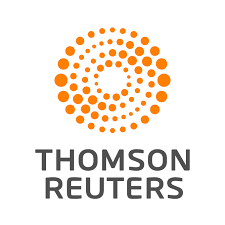The changing landscape of FX Benchmark regulation around the world will continue to evolve over the coming 12 months. As the European Benchmark Regulation (BMR) continues to roll out throughout Europe, administrators, contributors and users of benchmarks all around the world, must continue to adapt and be prepared for a range of implications.
The importance of benchmarks has grown on a global scale and they are now used for a range of purposes including mark-to-market evaluations, performance measurements, investable products, auditing, analysis and research, trade execution and of course in the calculation of market indices.
 FX Benchmarks have been thrust into the limelight in recent years, following the well publicised LIBOR-fixing scandal. In the early 2000’s, bankers from a number of large financial institutions were accused of providing information on the interest rates used to calculate LIBOR. As a result, there was a range of investigations launched surrounding the reliability and integrity of financial benchmarks.
FX Benchmarks have been thrust into the limelight in recent years, following the well publicised LIBOR-fixing scandal. In the early 2000’s, bankers from a number of large financial institutions were accused of providing information on the interest rates used to calculate LIBOR. As a result, there was a range of investigations launched surrounding the reliability and integrity of financial benchmarks.
The LIBOR scandal led to an industry-wide shakeup and what is now the European Benchmark Regulation (BMR). BMR will build on the global standards set out in the IOSCO Principles for Financial Benchmarks that were published in 2013. The goal of the regulation was to help reduce the risk of manipulation, increase reliability and create an all-around safer environment for those that use benchmarks in the EU.
European Benchmark Regulation (BMR)
On 30 June 2016 BMR came into place with a number of the critical provisions coming into effect immediately. The remaining provisions came into effect on 1 January 2018, with some scope in place for the transition period.
Under BMR every benchmark will need an administrator, and most importantly, the administrator will now need to be regulated. As a result of the heightened levels of regulation, there have already been reduced levels of contribution to benchmarks. Importantly, as with all regulation, there has been a significant jump in compliance costs and regulatory burdens. This poses a significant threat to many benchmarks and all the investments strategies that rely heavily on their prices.
As the transitional period surrounding the European Benchmark Regulation continues to be fazed in, benchmark administrators, contributors and users all face a new environment that will require an increased level of awareness.
Thomson Reuters Setting the Regulatory Benchmark
As the leading administrator of benchmarkers on a global scale, Thomson Reuters has been at the regulatory forefront to ensure their products are setting standards for the entire industry.

Speaking at a Seminar on Benchmarks in Sydney, Head of FX Benchmarks at Thomson Reuters, Shirley Barrow, said that benchmarks are still a vital part of global finance and the requirements for administrators are stricter than ever before.
“FX benchmarks are really an integral part of the financial market structure, with the intention to provide that clarity and transparency that is really from an opaque industry sector. What has really changed is the oversight and security that benchmark administrators and now subject to.”
“It’s no longer possible to just churn out data and call it a benchmark. It has to be far more sophisticated than that, it has to have greater governance and a whole lot of controls and structures around it,” said Shirley Barrow.
BMR’s Impact Beyond Europe
The reality is that while the European Benchmark Regulation (BMR) is clearly focused on the EU, users of benchmarks need to be aware that they will have a global impact.
“It is is impacting us all. It says that it’s EU regulation, but it’s not just EU relevance, it’s global relevance. If you have any exposure to Europe, or if you have any counterparties in Europe, then you need to be assessing your dependencies for your benchmarks,” said Shirley Barrow.
Regulation in financial markets has continued to increase in all areas since LIBOR and it’s something that Thomson Reuters is very much ahead of.
 “Regulation isn’t new and from a WM/Thomson Reuters perspective its something we’ve really been working hard on for the last four years or so. It really did start with the IOSCO principles, where they recommended compliance, and it’s something we took on board. We’ve also been assessed by IOSCO themselves twice in 2014 and 2016.”
“Regulation isn’t new and from a WM/Thomson Reuters perspective its something we’ve really been working hard on for the last four years or so. It really did start with the IOSCO principles, where they recommended compliance, and it’s something we took on board. We’ve also been assessed by IOSCO themselves twice in 2014 and 2016.”
“The Financial Conduct Authority (FCA) felt the WM/ Reuters closing 4 pm rate was systemically important and therefore defined it as a critical benchmark. Which then meant we fell within their scope of absolute bona fide regulatory practices. And that’s still the case until we ultimately transition into full BMR regulation,” said Shirley Barrow.
As EU BMR continues its rollout period, the rest of the world is still playing catch up. In the future, it’s going to be likely that benchmarks will be heavily regulated in multiple countries and by a wide range of regulatory bodies.
“We will certainly be on top of regional regulation. Thomson Reuters is really committed to this. It’s something that we absolutely need to be involved in,” she said.
With the demise of LIBOR and the increasingly regulated environment for benchmark administrators, Thomson Reuters has quickly become the single most important institution in the global benchmarks industry.
In 2016 Thomson Reuters acquired the WM benchmarks business from State Street. Thomson Reuters now owns, administers and calculates the WM benchmarks based on its own data. Thomson Reuters now manages benchmarks for more than 150 currencies throughout the day including the WM 4 pm fix.








